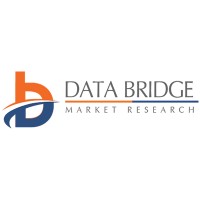
Introduction
Implementing an enterprise business solution is no longer just about improving workflows and boosting operational efficiency. In a world where data breaches, account takeovers, and insider threats are increasingly common, security has become a foundational priority in any digital transformation initiative. When organizations choose Microsoft Dynamics 365 to modernize their business systems, they must ensure that security is embedded at every stage of the deployment lifecycle—not added as an afterthought. This approach is often called security-by-design, and it is central to ensuring that business data remains protected during and after the transition. Integrating security as part of dynamics 365 implementation partners helps organizations build a reliable, compliant, and resilient business platform capable of supporting long-term growth.
Understanding the Security-by-Design Approach
Security-by-design means that security policies, controls, and threat prevention strategies are considered from the moment a Dynamics 365 project is initiated. Rather than applying security patches after the system is already running, organizations plan their security framework alongside system architecture, customization workflows, user role mapping, and data migration strategies.
This approach reduces vulnerabilities, lowers the cost of remediation, and ensures the system meets regulatory and compliance standards. Businesses in sectors such as finance, healthcare, logistics, aviation, and government particularly benefit from this methodology, as they often handle highly confidential data and are subject to strict oversight.
Identifying Security Requirements Before Implementation
The first step in a secure Dynamics 365 implementation is defining security policies based on business needs. This includes:
- Data classification (public, internal, restricted, confidential)
- User access requirements (based on job roles and responsibilities)
- Compliance regulations (GDPR, HIPAA, SOC, ISO, local regulatory laws)
- Data governance strategy (how data is stored, shared, retained, and archived)
By documenting these requirements early, organizations create a clear blueprint that informs configuration decisions, customization scope, and deployment workflows. This reduces delays and prevents misalignment between security objectives and business functions.
Role-Based Access Control and Least Privilege Access
One of the core security capabilities in Dynamics 365 is Role-Based Access Control (RBAC). RBAC ensures that employees access only the information required for their job responsibilities. This is known as the least privilege principle.
For example:
- A sales representative can view leads and opportunities but not financial accounting data.
- A warehouse manager can update inventory levels but should not have permission to modify vendor payment records.
During implementation, each user profile is mapped to a security role. This prevents unauthorized access, minimizes accidental modifications, and strengthens overall system governance. Proper role configuration is crucial and must be validated through testing before going live.
Data Encryption and Secure Storage Practices
Dynamics 365 provides encryption at rest and in transit, meaning data is protected whether it is being stored in Microsoft’s cloud infrastructure or transferred between devices. However, organizations must make key decisions such as:
- Whether to bring their own encryption keys (BYOK)
- Whether additional encryption layers are needed based on industry regulations
- How long data should be retained and how old data should be archived or purged
These decisions should be finalized during the implementation design phase to ensure consistency and efficiency. Encryption strategies prevent unauthorized users—internal or external—from reading or modifying confidential information.
Secure Data Migration During Dynamics 365 Implementation
Data migration is one of the most sensitive phases of microsoft dynamics 365 implementation services. During migration, legacy systems often store data in outdated formats, unencrypted databases, or poorly secured applications. If not handled properly, this stage can expose critical business information to cyber risks.
To secure the data migration phase, organizations should:
- Inventory and classify all legacy data before migration
- Clean and remove redundant or outdated data (data minimization reduces exposure)
- Migrate data using secure transfer protocols
- Validate and audit migrated data for integrity and completeness
Additionally, data migration teams must be trained on secure handling procedures to prevent insider threats and accidental data leakage.
Leveraging Azure Security Layer and Conditional Access Controls
As Dynamics 365 is built on Microsoft Azure, organizations have access to a vast array of cloud security features. Conditional access policies enable dynamic authentication and authorization. decisions based on various factors such as location, device type, and risk profile.
For example:
- Users accessing the system from outside the corporate network may be required to use MFA (Multi-Factor Authentication)
- Users accessing via an unknown device may require administrator approval
- High-risk logins can be blocked automatically by Azure AD Identity Protection
These controls ensure that unauthorized or unusual login attempts are detected and mitigated instantly.
Monitoring, Auditing, and Continuous Security Improvement
Security-by-design does not end when the system goes live. Ongoing monitoring and auditing help ensure that new vulnerabilities, user behavior changes, or business expansions do not create security weaknesses. Dynamics 365 provides logging and auditing tools that track:
- Changes in access privileges
- Data modifications
- User activity
- System performance
Integrating these logs with security information and event management tools (SIEM) allows organizations to detect suspicious activities and respond quickly.
Top Service Providers for Microsoft Dynamics 365 Implementation Services
Choosing the right implementation partner is essential for achieving a secure deployment. The following are some notable service providers experienced in delivering secure, scalable, and compliant Dynamics 365 solutions:
- InTWO – A global cloud transformation and digital services partner known for secure cloud deployments, compliance-driven implementation methodologies, and strong focus on data governance.
- Hitachi Solutions – Offers industry-specific Dynamics 365 solutions with advanced security alignment tools.
- Wipro – Specializes in large-scale enterprise implementation and cloud security frameworks.
- HCLTech – Provides integration, customization, and operational continuity support for complex cloud environments.
- Tata Consultancy Services (TCS) – Known for deep industry knowledge and secure cloud adoption frameworks.
These service providers not only deploy the system but also support user training, change management, and ongoing governance to ensure long-term success.
Conclusion
Protecting business data throughout a Dynamics 365 implementation requires more than just enabling security settings. It demands a well-planned, structured, and continuous approach that begins before deployment and continues throughout system usage. By applying the principles of security-by-design, organizations ensure that security is not just an add-on but a core feature of their digital transformation journey.
A secure implementation builds trust, strengthens compliance, reduces risks, and ensures business continuity. As companies continue to digitize operations and rely more heavily on enterprise data, the importance of securing that data has never been greater.




